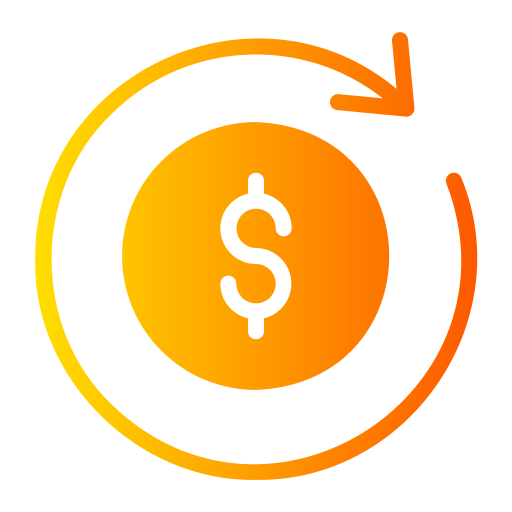Mixing the low-end in music production is a crucial aspect of creating a balanced and powerful mix.
The low-end, which consists of bass frequencies ranging from around 20 Hz to around 250 Hz, provides the foundation for the rest of the mix and can have a big impact on the overall energy and vibe of a track. In this article, we'll cover some key techniques for mixing the low-end in music production, including EQ, compression, saturation and limiting.
By the end of this article, you'll have a better understanding of how to mix the low-end in your own music and create powerful, punchy mixes.
Jump To Section
1. Identify the sources of the low-end in your mix
2. Use EQ to shape the low-end
3. Use compression to control the dynamics of the low-end
4. Use saturation to add character and warmth to the low-end
5. Use limiting to protect against overloading the mix
Identifying the sources of the low-end in your mix is a crucial first step in effectively mixing the low-end. The low-end frequency range, which ranges from around 20 Hz to around 250 Hz, is typically occupied by instruments like the bass guitar, synthesizer bass, and kick drum. In addition to these instruments, sub bass, which is often synthesized or layered with other sources, can also contribute to the low-end of a mix.

It's important to be mindful of all the sources of the low-end in your mix, as they can all contribute to the overall balance and clarity of the mix. For example, if you have a strong bass guitar and a strong kick drum both occupying the same frequency range, they may end up competing with each other and causing the mix to sound cluttered and unclear. On the other hand, if you have a well-defined bass guitar and a punchy kick drum that are both occupying their own distinct frequency ranges, the mix will sound much more focused and powerful.
To identify the sources of the low-end in your mix, start by soloing each track and listening to it in isolation. Pay attention to the frequency range of each instrument and how it contributes to the overall low-end of the mix. If you're using a synthesizer to create sub bass, consider layering it with other sources like a bass guitar or kick drum to add depth and complexity to the low-end.
It's also important to consider the relationship between the different sources of the low-end in your mix. For example, if you have a strong bass guitar that's occupying the lower end of the frequency range, you may want to consider using a higher-pitched kick drum to add definition and clarity to the mix. Alternatively, if you have a punchy, mid-range kick drum, you may want to use a bass guitar with a stronger presence in the lower frequency range to create a solid foundation for the mix.
EQ, or equalization, is a crucial tool for shaping the low-end in music production. By using EQ, you can cut or boost specific frequency ranges in order to create balance and definition in the low-end of your mix.
One common approach to EQing the low-end is to use a high-pass filter to cut out frequencies below a certain threshold. For example, if you have a bass guitar that's occupying a lot of the low-end frequency range, you may want to use a high-pass filter to cut out frequencies below around 30 Hz. This can help to create space for other instruments and prevent the mix from sounding muddy or cluttered.
On the other hand, if you want to bring out the character and definition of a particular instrument in the low-end, you can use a low-shelf EQ to boost certain frequencies. For example, if you want to add warmth and body to a bass guitar, you can use a low-shelf EQ to boost frequencies around 80-100 Hz. Alternatively, if you want to add punch and clarity to a kick drum, you can use a low-shelf EQ to boost frequencies around 100-150 Hz.
It's important to be mindful of the overall balance of the low-end when EQing individual instruments. For example, if you boost the low-end on the bass guitar too much, it may end up competing with the kick drum for space in the mix. On the other hand, if you cut too much of the low-end on the bass guitar, the mix may lack depth and power.

In addition to using EQ to shape the individual instruments in the low-end, you can also use EQ to alter the stereo image of the low-end. For example, if you want to create a wide, spacious sound in the low-end, you can use a mid/side EQ to boost the sides of the mix. Alternatively, if you want to create a more focused, mono sound in the low-end, you can use a mid/side EQ to cut the sides of the mix.
Compression is a powerful tool for controlling the dynamics of the low-end in music production. By using compression, you can even out the level of the low-end sources and create a more cohesive and punchy sound.

To use compression on the low-end, start by setting the threshold and ratio. The threshold determines the level at which the compressor will start to reduce the level of the signal, while the ratio determines the amount of gain reduction applied to the signal. For example, if you set the threshold at -10 dB and the ratio at 2:1, the compressor will reduce the level of the signal by 2 dB for every 1 dB that the signal exceeds the threshold.
It's important to be mindful of the threshold and ratio settings when compressing the low-end, as too much compression can result in a lifeless and over-compressed sound. On the other hand, too little compression can result in a uneven and inconsistent sound.
In addition to the threshold and ratio settings, you can also use the attack and release settings to shape the sound of the low-end. The attack setting determines how quickly the compressor starts reducing the level of the signal, while the release setting determines how quickly the compressor returns to its normal level of gain reduction.
For example, if you want to add punch and definition to a kick drum, you can set a fast attack time to allow the initial attack of the drum to come through clearly. On the other hand, if you want to create a smooth and sustained sound in the low-end, you can set a slower release time to allow the compressor to sustain the level of the signal.
Using saturation can be a great way to add depth and complexity to your mix. Saturation is the process of adding harmonics to a signal, which can add warmth, depth, and character to the sound.

There are many different types of saturation that you can use in music production, including tape saturation, tube saturation, and digital saturation. Each type of saturation has its own unique characteristics, so it's important to experiment with different types to find what works best for your music.
- Tape saturation is a type of saturation that's modeled after the sound of recording to analog tape.
- Tube saturation is another type of saturation that's modeled after the sound of vacuum tubes in analog gear.
- Digital saturation is a type of saturation that's created using digital algorithms.
It's important to be mindful of the amount of saturation you're using on the low-end, as too much saturation can result in a distorted and cluttered sound. On the other hand, too little saturation can result in a lifeless and dull sound.
In addition to using saturation on the individual instruments in the low-end, you can also use saturation on the master channel to add character and warmth to the entire mix. To do this, simply insert a saturation plugin on the master channel and dial in the amount of saturation to taste.
Using limiting to protect against overloading the mix is a crucial aspect of mixing the low-end in music production. Limiting is a form of dynamic range compression that prevents the mix from peaking too high and causing distortion.
To use limiting on the low-end, start by inserting a limiter plugin on the master channel. Next, set the threshold to a level that allows the mix to reach its desired peak level without going over. The threshold is the level at which the limiter starts to reduce the level of the signal.
It's important to be mindful of the threshold setting when using limiting on the low-end, as setting it too low can result in an over-compressed and lifeless sound. On the other hand, setting it too high can result in a mix that's too dynamic and prone to distortion.
In addition to the threshold setting, you can also use the attack and release settings to shape the sound of the limiting. The attack setting determines how quickly the limiter starts reducing the level of the signal, while the release setting determines how quickly the limiter returns to its normal level of gain reduction.
For example, if you want to create a punchy and dynamic low-end, you can set a fast attack time to allow the initial attack of the instruments to come through clearly. On the other hand, if you want to create a smooth and sustained sound in the low-end, you can set a slower release time to allow the limiter to sustain the level of the signal.

It's important to be mindful of the attack and release settings when using limiting on the low-end, as setting them too fast or too slow can result in an unnatural or exaggerated sound.
In conclusion, mixing the low-end in music production is a crucial aspect of creating a balanced and powerful mix. By using techniques like EQ, compression, saturation and limiting, you can shape the low-end of your mix and create a solid foundation for the rest of the track.
It's important to be mindful of the sources of the low-end in your mix, as well as the relationship between those sources. By carefully considering the frequency range and character of each source, you can create a balanced and powerful low-end that anchors the rest of the mix.
Overall, the key to effectively mixing the low-end is to find the right balance between clarity and character. By experimenting with different techniques and finding what works best for your music, you can create powerful, punchy mixes that are anchored by a strong and cohesive low-end.
If you are looking for killer basslines and kicks for your low ends check out our collection here.







































